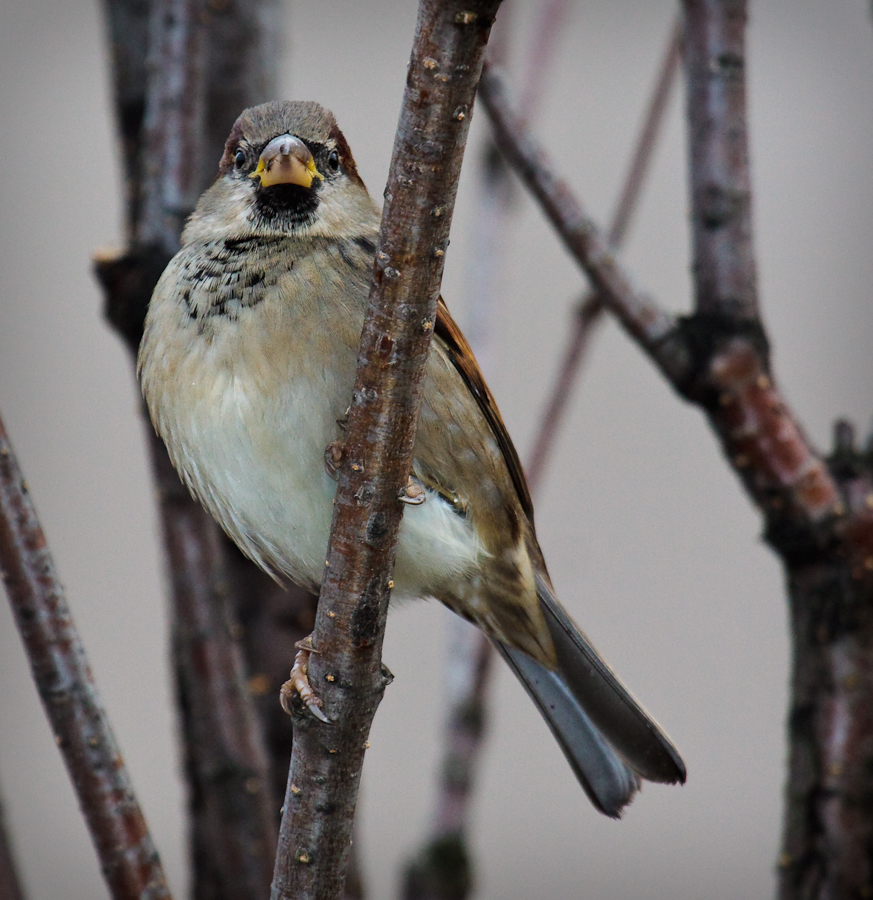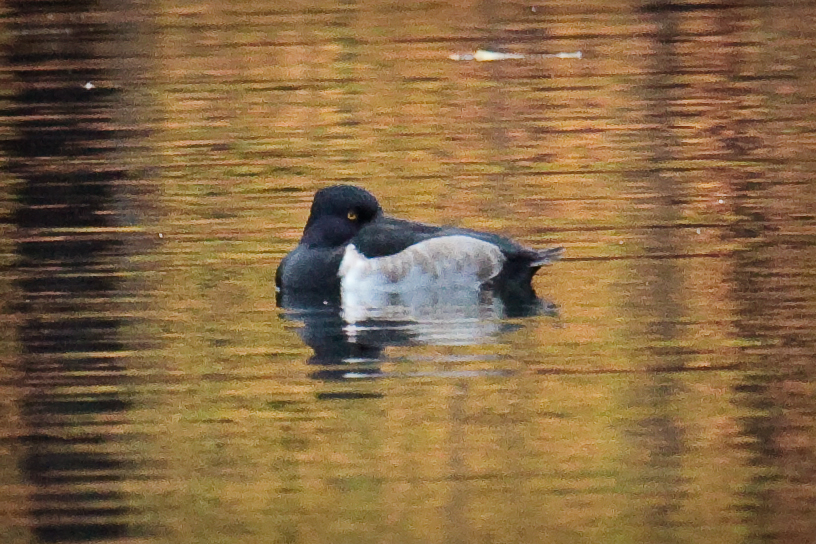The Canon EF 100-400mm f/4.5-5.6 L IS USM Lens is for the Birds
This weekend I rented a Canon EF 100-400mm f/4.5-5.6 L IS USM zoom lens. This is the first L series lens I’ve used for any length of time. Unfortunately, yesterday was too rainy and overcast to give it a real workout; but today was much clearer and I got to the park bright and early around 8 AM. Wow. the difference between this lens and the lenses I had been using bird photography was like night and day. Just look at this House Sparrow:

With and without flash, the images were crisp, sharp, and more often than not in focus. I was actually able to start choosing which images to keep based on composition and the interest of the picture. I no longer had to select only the one or two sharp images out of 100. For the first time, I was able to take super telephoto pictures that came out as sharp as the images taken with my hundred millimeter prime lens.
And it wasn’t just for the close birds either. My Tamron 28-300 could sometimes manage sharp photos in bright sunlight on birds just a few meters away. However, it failed in weak light and when the birds were some distance away. This lens managed well both on close subjects and far subjects and in rather weak light throughout the morning. For instance, look at this Ring-necked Duck that was hanging out in the Upper Pool:

It’s a little small, because it was pushing the limit of a 400mm lens, and a tad grainy because I was shooting at ISO 1000, but it’s still clearly recognizable.
I was a little worried about the weight (1360 g), but although this lens is heavier than I’d prefer in an ideal world, it’s still light enough to handhold and to carry around all day. Really, I just need to get a shoulder strap for my camera instead of the neck strap I’m using now.
I’m seriously considering buying one of these. This is far and away the best handheld bird lens I’ve had the pleasure to use. It’s the first one that actually made the photography relatively easy, and allowed me to focus on the composition and exposure rather than worrying constantly about sharpness and stability. In the first three hours I was in the park I actually managed to fill a complete 8 GB flash card, something I’ve never done before. then I swapped in another 4 GB flash card, and promptly filled that. I didn’t get any truly spectacular photos, mostly because the opportunities didn’t really present themselves, but I was just having so much fun snapping away at the house sparrows and rock pigeons that I lost track of just how many pictures I was taking.
Some photographers aren’t fond of the push-pull zoom system, but I soon noticed that I was shooting almost all of my photographs at the 400 mm long end, and it was quite straightforward to just push the lens all the way out. In fact, I tended to use the wider field of view of 100 mm short end to find the target, and then push the lens out to zoom in on it. For a few photos of swans and ducks and squirrels that were relatively close I’d go down to 300 mm or even 250 mm, but that wasn’t more than about 10% of the total shots. The short end otherwise just wasn’t very useful. That does make me wonder if maybe what I really need is a 400 mm prime lens or alternatively a 300 mm prime lens with 1.4x tele-converter. Unfortunately, nobody makes a relatively light weight, image stabilized 400 mm prime lens. The 400mm f/5.6L from Canon is highly regarded, but it’s not image stabilized and I think IS really helps when what you want is a handheld lens. Maybe I’ll try renting one of these anyway, and see how it does. Arthur Morris has published some really nice shots taken with a handheld Canon EF 400mm f/4.0 DO IS USM lens. However, that’s about 600g heavier and $4000 more expensive; and I think that exceeds both my weight and price limit. That lens is more intended for tripod use with perhaps occasional handholding. Canon also makes a 400mm f/2.8L prime that does have image stabilization. However, at 5370g and over $6000, that’s even more too heavy and too expensive. I definitely also want to try renting the lighter (1190g) 300mm f/4L, though I was a little surprised at just how much difference the extra hundred millimeters made, so I’m not quite as excited by that possibility as I was before I tried the 100-400 mm zoom.
I only had a couple of minor complaints about this lens. The first is that it really doesn’t work very well with teleconverters. The autofocus is pretty much useless, and you lose a lot of sharpness. However at 400 mm on a 1.6 X. magnification factor body like the Canon EOS 50D, that’s not a crippling limitation. My only other minor concern–and I do emphasize minor–is that the minimum focusing distance is a little long at 1.8m. For the occasional close-up shot of a plant or bug, I usually found myself having to pull back several times before I could bring the object into focus. However, I do have a macro lens, and for birds 1.8m is more than close enough.
I’ve uploaded some more examples to Picasa.

November 16th, 2009 at 10:29 AM
Great! Glad you finally got the chance to try out an L lens, as so many of us have suggested. The 100-400 looks like a great fit for your needs. Extenders work ok with fast primes (2.8+), but with this lens there’s not enough light to give up since it starts at 4.5. As for min. focusing distance, comes with the territory. In the end, the results definitely look much better. Go buy one :)
November 16th, 2009 at 12:04 PM
FWIW, when I was doing pictures seriously, Canon glass was second only to Leitz in reputation. Nikon was still riding on the reputation of the F as bullet proof, not its glass. Today, I see more Canon in the photo pits than ever before.